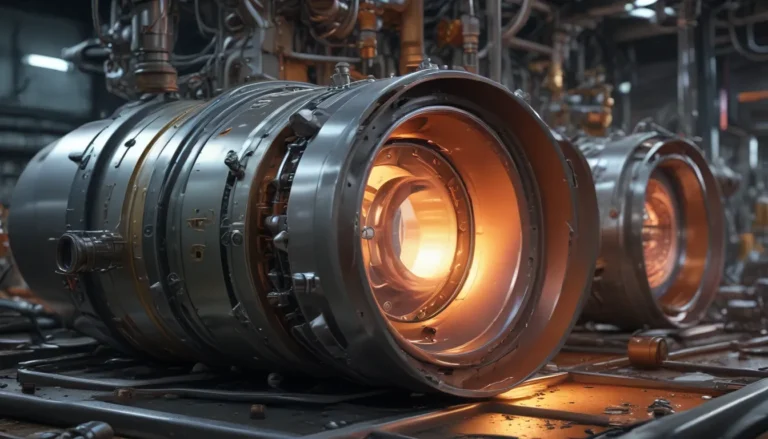A Note About Images: The images used in our articles are for illustration purposes only and may not exactly match the content. They are meant to engage readers, but the text should be relied upon for accurate information.
Are you fascinated by the intricate world of Chemistry and the wonders it holds? Dive into the realm of the Eutectoid System, a captivating area of study that unveils unique properties and behaviors within alloys. From the formation of special microstructures to its profound impact on material science and engineering, the Eutectoid System is a phenomenon that continues to intrigue scientists and researchers worldwide. Let’s uncover the enigmatic facts about this system and gain a deeper appreciation for its complexity and significance.
Unveiling the Eutectoid System: A Chemical Marvel
The Eutectoid System, also known as the Eutectoid Reaction, is a captivating chemical phenomenon that takes place in certain alloys under specific thermal conditions. It involves the simultaneous transformation of a solid phase into two distinct solid phases at a particular composition. This unique behavior has profound implications in various industries, including metallurgy, materials science, and catalysis, as it influences the properties and performance of materials.
The Crucial Role of Carbon in the Eutectoid System
Carbon plays a pivotal role in the Eutectoid System, particularly in the formation of carbon-rich cementite (Fe3C) and carbon-depleted ferrite (?-iron) during the eutectoid reaction. This interplay between carbon and the alloy composition is essential for the development of unique microstructures with enhanced mechanical properties.
Delving into the Eutectoid Point: A Magical Temperature
At the heart of the Eutectoid System lies the Eutectoid Point, a critical temperature where the eutectoid reaction occurs. In the case of iron-carbon alloys, this temperature is approximately 727°C, known as the eutectoid temperature. It is at this precise temperature that the transformation from austenite to pearlite takes place, unveiling the marvel of phase transitions.
Unraveling the Mystery of Pearlite: A Microstructural Wonder
Pearlite, a distinctive microstructure formed through the eutectoid reaction, consists of alternating layers of ferrite and cementite. This unique arrangement imparts remarkable mechanical properties to materials, including increased strength and hardness. The birth of pearlite showcases the intricate dance of atoms within the Eutectoid System.
Navigating the TTT Diagram: A Graphical Insight
The Time-Temperature-Transformation (TTT) diagram serves as a graphical representation of the transformation characteristics of materials during the eutectoid reaction. By providing valuable insights into the cooling rate required to achieve desired microstructures and properties, the TTT diagram guides researchers and engineers in optimizing material performance.
Alloy Composition: Shaping the Eutectoid System
The composition of the alloy significantly shapes the behavior of the eutectoid reaction, influencing factors such as eutectoid temperature, phase boundaries, and resulting microstructures. This versatility in composition contributes to the complexity and intrigue of the Eutectoid System, offering a diverse array of possibilities for exploration.
Applications in the Steel Industry: Transforming Materials
The understanding of the eutectoid system has revolutionized the steel industry, allowing engineers and metallurgists to precisely control the properties and microstructures of steel through various heat treatment processes. Techniques like annealing, quenching, and tempering leverage the eutectoid system to enhance the strength and durability of steel, driving advancements in material science.
From Nature to Industry: Eutectoid System Beyond Alloys
The influence of the eutectoid system extends beyond alloy chemistry to natural processes, where similar phase transformations and eutectoid reactions can be observed in geological formations. Understanding these phenomena not only enriches our knowledge of materials but also broadens our perspectives on the interconnectedness of science.
Overcoming Challenges in Eutectoid System Research
Researchers encounter various challenges when delving into the complexities of the eutectoid system. The intricate interactions between different elements, phase transformations, and kinetics demand advanced analytical techniques and computational models for deepening our understanding. By overcoming these challenges, scientists pave the way for groundbreaking discoveries in materials science and engineering.
Innovation Driven by Eutectoid System Knowledge
The knowledge derived from studying the eutectoid system fuels innovation in material science and engineering, driving the development of high-strength steels, tailored alloys, and advanced heat treatment methods. These innovations not only shape the future of industrial applications but also inspire a new generation of materials scientists to push the boundaries of discovery.
Embracing the Future: Exploring the Eutectoid System
The exploration of the eutectoid system holds immense potential for unraveling its mysteries and unlocking new technological advancements. As scientists and researchers continue to probe the depths of this enigmatic system, they pave the way for innovative industrial applications and advancements in various fields. The journey of discovery within the eutectoid system is a testament to human curiosity and the quest for knowledge.
Conclusion: Deciphering the Enigma of the Eutectoid System
In conclusion, the enigmatic facts about the Eutectoid System shed light on its importance in materials science and engineering. From its transformative properties to its applications in diverse industries, the eutectoid system stands as a cornerstone for innovation and exploration. By unraveling its mysteries, researchers and scientists pave the way for future advancements that will shape the landscape of technology and industry.
FAQs: Exploring Common Questions About the Eutectoid System
-
What is the eutectoid system, and how does it differ from other systems?
The eutectoid system involves the transformation of a single phase into two distinct phases at a specific temperature and composition, distinguishing it from other phase equilibrium systems. -
What are some factors that influence the behavior of the eutectoid system?
Composition, temperature, and pressure play significant roles in determining the phases that form during the eutectoid transformation, shaping the properties of materials. -
Can the eutectoid system be manipulated for specific purposes?
Yes, by adjusting the composition and processing conditions, the eutectoid system can be tailored to achieve desired properties in materials, offering versatility and customization. -
What are the potential future developments in understanding the eutectoid system?
Advanced computational modeling, experimental techniques, and the discovery of novel materials hold promise for further advancements in exploring the eutectoid system and its applications. -
How does the eutectoid system contribute to the field of materials science?
By providing insights into phase transformations, microstructure development, and material properties, the eutectoid system drives innovation in materials engineering and the creation of advanced materials.
Embrace the fascinating world of the Eutectoid System, where the complexities of chemistry weave a tapestry of innovation and discovery. Through exploration and curiosity, we unlock the secrets of materials science and shape the future of technology with each enigmatic fact we uncover. Join us on this journey of knowledge and exploration, and together, let’s unravel the mysteries of the eutectoid system.






